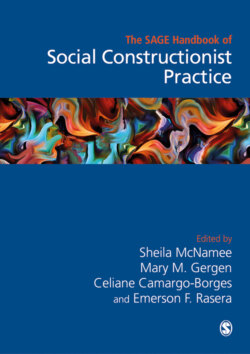Читать книгу The Sage Handbook of Social Constructionist Practice - Группа авторов - Страница 67
На сайте Литреса книга снята с продажи.
Action Research Heritage
ОглавлениеThe term ‘action research’ is often attributed to Kurt Lewin (1946), but increasingly it is common to hear of two origins of action research, one from Global North and the other from the Global South. These are, however, becoming quite intertwined. The Global North account starts with Kurt Lewin's efforts to understand and prevent human complicity in such horrors as the Nazi Holocaust. Father of social psychology, Lewin escaped Nazi Germany and then stumbled, through collaboration, into bringing observers (e.g., research facilitators) and research subjects (e.g., therapeutic groups) together to share, understand and create new patterns of dialogic interaction. The other account centers on the collaboration of Colombian Orlando Fals Borda (2006) working with Bangladeshi Anis Rahman (2004). Situated in the Global South, action research went hand-in-hand with popular liberation movements, which espoused the importance of popular knowledge creation among non-elite populations (Freire, 1970). The North and South traditions interweave today with, for example, the North's embrace of the arts, e.g., inspired by Augusto Boal's (1985) theatre of the oppressed, At the same time, the Global South embraces a wider set of emancipatory issues – such as gender, sexuality and race – that intersect with the previous emphasis on economic justice.
The heritage of action research is both wider and deeper than just the past few decades. Olav Eikeland (2006) traces the ethical orientation of action research back to Aristotle, whose notions of multiple ways of knowing included what we might call the primacy of the practical (techne) and cultivation of cycles of action and reflection (praxis). Action research also provides interesting points of connection to Indigenous ways of knowing because of a growing openness to the arts (Etmanski and Bishop, 2017). In turn, this allows for connection to the more integrative Eastern paradigm of mindfulness that weaves threads from Buddhist teachings to Greek and to Western Enlightenment philosophers such as Montaigne. Indeed recent scholarship is troubling the simple notions of what is East and what is West.
The contemporary manifestation of action research as ART includes attention to both internal (subjective) and external (objective) worlds, and goes beyond overly rationalistic formats to include the arts. Since the 1970s, explicit concern with social liberation has been a central component of all action research. Without this concern, indeed, action research is devitalized to a set of powerful but uncritical techniques. The concept/practice of mindfulness is more globally appreciated for its help in becoming choiceful with intention and emotion. In short, action research has always been transforming and with its practice emphasis and pragmatic purpose has been open to methodological innovation, which in turn opens the door to new ways of living in the world. Given the growing eco-social crises of our time, action research finds a contemporary expression in Action Research for Transformations (ART) (Bradbury et al., 2019) as a call for creative experiments in how to live better together. Our aspiration is that more of us who practice action-oriented scholarship may revitalize our social institutions as social systems learn to become beneficial presences on our shared Earth.
In Figure 5.1, action-oriented transformations research is presented as an orientation to learning that makes it possible to know ourselves simultaneously as scientists and caring citizens, consciously bringing reflexive agency (‘inner work’) to peer learning experiments with our stakeholders (‘outer work’) in service to a better world. This orientation is a means and an end. By ‘relational space’ we mean finding resonance with the ones we work with, the so-called ‘objects’ of our study, using the myriad insights of group dynamics while also attuning to ourselves. Such artful processes often require respect for generative silence (so as not to be burdened by too much ‘self’), speaking from the heart, use of the arts, listening generously, participating constructively, hanging in when confidence is shaken, and … yes, enjoying ourselves! This in turn enriches our conceptual space, a space for better ideas, richer insights, to meet and align. When these spaces are well mingled, transformative experiments become possible. In other words, action-oriented researchers for transformations – ARTists – require equal emphasis on relational, conceptual and praxis spaces. Therefore, in Figure 5.1 you see these core components, linking relational with the more familiar conceptual space of scholarship and then to pragmatic expression in experiments. Action-oriented transformations research is, therefore, an invitation to inquiry-in-practice on how there can be a more concerted emphasis on making a positive difference with the stakeholders to an issue in response to the crises we now face. Intention is key. Without intention toward transformation, scholarship is simply another set of good ideas, disconnected from experience, unembodied.
Figure 5.1 Action-oriented Research for Transformations (ART)
A case follows. It's intended to provide detail enough to clarify what has just been sketched and, one hopes, to connect lofty sounding abstractions to practice. In the following case, the elements of purpose, listening/inquiry in practice, making a positive difference with the stakeholders to an issue, resonance within the subject/object distinction, specific methodologies, dynamically reconnecting reflection to sense-making and active experiments in learning, use of the arts, working transformatively, overcoming institutional inertia – and, not to forget, enjoying ourselves too – will become evident.
